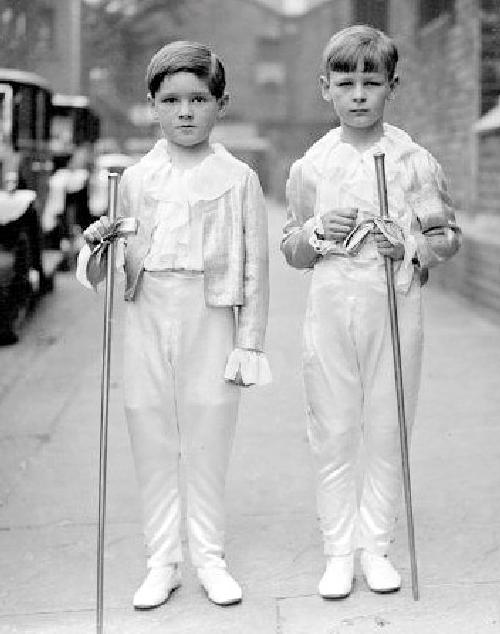
Figure 1.--These two British page boys were photographed a a society wedding in Knightsbridge in 1928. The boy on the right is Lord French and the boy on the left is Master Christopher Parker. They look to be 8-9 yeras old. |

|
The youngest boy in the wedding party normally serves as the ring bearer. Older boys can assist as pages. Employing boys in formal weddings as attendants is deriving from the ceremonial functions medieval pages performed in royal courts. There are two such roles for boys in a formal wedding, that of pages and ring bearer. In modern days the page is the boy or more commonly boys who hold the long train of a bride's gown at a formal wedding. Generally pages are school age
boys. A younger boy at a wedding may be employed as a ring bearer. A page ws a boy who acted as a knight's attendant as the first stage of training for chivalric knighthood and a youth used in ceremonial employment or attendance at a royal court. The term cam to be used to run errands, carry messages, or act as a guide in a hotel, theater,
or club. Because of the association with ceremonial functions, boys inviolved in weddings, even those of commoners came to be designated as pages. This first became common during the Victorian era in England--an era in which many popular wedding traditions bcame fixed.
These two British page boys were photographed a a society wedding in Knightsbridge in 1928 (figure 1). The boy on the right is Lord French
and the boy on the left is Master Christopher Parker. They look to be 8-9 yeras old. The material appears to be either a light weight silk or satin type. The blouses are definitely white. The blouses appear to be front buttoning with a placket. The large soft ruffled collars have ties that are also floppy in matching colors. This could also be a Jabot (SP?). The
jackets are very short and lack lapels. The jackets are not white but either off white or a light color, but there is no way of telling the color from the black and white portrait, and also in a smooth fabric probably silk or satin. The blouses have very large ruffled collars. The blouses' cuffs have long ruffles. The children wear slim-cut long trousers of a somewhat different material and color than their jackets. There are ornamental buttons at the hems of the trousers but the number is too difficult to determine. The material is extremely light weight. The boys are wearing white socks (the type is too difficult to tell) and white slippers of some sort. The boys also carry pastel-colored bows on their staffs, but how that fits in I am uncertain. The hair cuts appear to be softer than I would normally expect for 1928 not slicked back etc. One definitely is wearing a page cut with bangs while the other has his hair combed to the side.
An English reader tells us about white clothing he wore as a boy. He recalls boys didn;t wear white much, except PE suits and white shirts, among other colors, for school. There was one outfit he did wear. He remembers in particular a page boy outfit he wore. He remembers in particular a white page boy outfit that he and his cousins really disliked. At first they were going to weak kilts. In retrospect he tells us that the kilts would have been preferable.
Navigate the Boys' Historical Clothing Web Site religious pages:
[Return to the Main wedding page]
[Return to the Main pageboy page]
[First Communion]
[Ring bearer]
[Victorian wedding]
Navigate the Boys' Historical Clothing Web Site:
[Introduction]
[Activities]
[Biographies]
[Chronology]
[Clothing styles]
[Countries]
[Bibliographies]
[Contributions]
[Essays]
[FAQs]
[Glossaries]
[Images]
[Links]
[Registration]
[Tools]
[Boys' Clothing Home]
